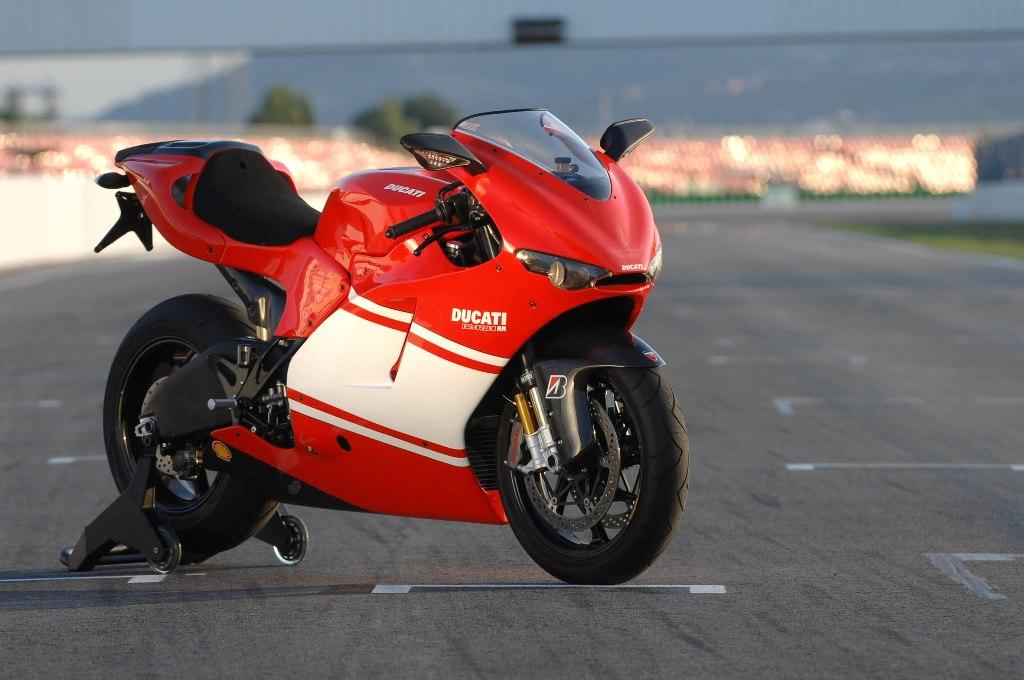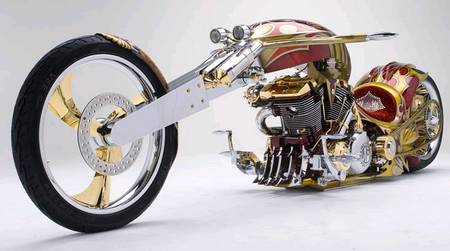Wow!!!! The Most Expensive Motorcycle in The World !!!
Bikes are considered to be one of the best and comfortable vehicles and usually, guys will be a fond of bike lovers. Actually, bikes not only fulfill the traveling task but it makes everyone attract due to its physical appearance. Various companies in the world are the manufacturers of the bike and the main thing is that they expect most expensive bikes. These highest price bikes actually give good mileage and make any individual into a stylish fellow. Since these bikes might be expensive due to various features such as their structure, design and even speed.
So these most expensive bikes are always a huge dream for youngsters and it widely gives a huge companion plus gives a great speed. Even some of the bikes work as a racing vehicle with vast key features. The most expensive bikes are mostly meant for the billionaires due to its brand and materials which are fixed inside. so, i will show you :
the most expensive motorcycle in the world !!!
10. Ducati Testa Stretta NCR Macchia Nera Concept - $225,000

Motorcycles are priced for their technical performance, designs, frameworks, and outlook. Another way is to manufacture only a certain number of them, to make them limited edition.
Ducati Macchia Nera may not compete with the other big bikes in this list in terms of pure speed—notwithstanding that Macchia Nera or Block Spot humorously suggests you could create a charred pavement behind while driving it—but titanium and carbon fiber materials to render it impressively lightweight at 297 pounds, artistic contribution by visionary designer Aldo Drudi, and only a number of them made available convinced most aficionados the price is justified to ensure the model makes it to their collection.
9. Ducati Desmosedici D16RR NCR M16 - $232,500

NCR starts with a $72,500 Desmosedici D16RR and reworks it to make it lighter and more powerful. The result: the $232,500 road missile NCR Millona 16.
Where does the money go? Carbon fiber everywhere on the M16, check, including load-bearing parts such as the frame, swingarm and wheels. The fuel tank, fairing, tail and fenders are carbon too. Mechanical parts are either titanium, right down to the bolts, or avionic-grade aluminum.
A stock 989cc V-four Ducati motor sends around 175 horsepower to the back wheel, but NCR has tuned the M16 to send 200-plus hp to the tarmac. Current-generation MotoGP suspension helps get that power down, and the M16 also uses race-style electronics with traction control, data recording and user-selectable maps.
Without gas, M16 is claimed to weigh at 319 lbs (145 kg), lighter than the regulation 330 lb minimum of a four-cylinder MotoGP bike.
8. Ecosse FE Ti XX Titanium Series - $300,000

Back in 2007, many thought a $300,000 price tag for a big bike was insane, no matter if it sported the mostest in every detail that mattered. How times have changed, and in ten years $300,000 easily lost its number one spot, instead going good only for an eighth place in the top ten most expensive big bikes in the world.
The FE Ti XX is powered by a 2,409cc billet aluminium engine transmitting 228PS of power to the rear wheel. Carbon fiber has been used abundantly on the bike to keep the weight low. The saddle has been handcrafted by posh Italian leather virtuoso Berluti. Its grade-9 titanium exhaust pipes have a ceramic media shot-peened finish on them.
Those who managed to get their hands on the FE Ti XX no doubt belong to a tightly exclusive lot, as only 13 units of them were ever made.
7. Dodge Tomahawk V10 Superbike - $550,000

If you think the Dodge Tomahawk V10 Superbike suspiciously looks like a 4-wheel Dodge squeezed on both sides, you won’t be alone. This Tomahawk V10 Superbike is a strange beast indeed, and not just because it uses a V10 four-stroke Dodge Viper engine that could easily power up any chassis with more than two wheels attached to it to give you the feeling of being dragged by a fleet of 500 supercharged ponies looking forward to storm the Bastille. Now talk about the soul of two-wheel steeds!
As introduced in 2003, the one-of-a-kind Tomahawk was operational and road-ready, but not fully road-tested. At the minimum, this Tomahawk is capable of reaching 60 mph (96.5 kph) in about 2.5 seconds with a theoretical top speed of 400 mph. In practice, it’s hard to imagine anyone willing to prove it. Evel Knievel probably, but he’s long retired at the time of the Tomahawk’s release and now he’s dead. Would you, however?
You might have serious doubts riding this big bike, but certainly many enthusiasts are more than eager to walk this monster to their garage. This Tomahawk whose components were custom-milled from blocks of aluminum sure would not fail to catch the eyes of everyone in any showroom.
6. Harley Davidson Cosmic Starship - $1.5 million

What used to occupy first place in many top-ten list of most expensive big bikes is now only good for a sixth position. However, it claims to have been sold at $3.5 million and is now up for sale at $12 million. If that happens, it should recapture the crown it once had—or not, since we don’t imagine the rest of the entries here would remain with static prices days ahead too.
Not a few people already consider most big bikes as a work of art in their own right, so making one that is a literal work of art is the next obvious step. Right?
Harley Davidson appears to think so, and in their Cosmic Starship, they partnered with the famed rebel cosmic existentialist artist Jack Armstrong to apply yellow-and-red paint over a Harley V-rod and originally sold it at a flat $1 million dollars after much fanfare broadcast all over the world.
If you bought a Cosmic Starship, though, you would want to think twice before parading such prized treasure all over the place.
What to do? You could strip the painted parts and secure it in a vault and replace with regular parts, but that is hardly a wise decision. Art and machine went out together and priced with that combo consideration. Your next best choice is shell out another $16,000 and buy a V-rod that came without that art paint on it. Which brings us to another reality: that artwork is worth $984,000. But when you consider that some of Armstrong’s works go for $3 million, there really is no reason to balk about the added price.
5. BMS Nehmesis - $3 million
baseline;">





The first thing you would notice about the BMS Nehmesis is the yellow glitter and absence of side stand, making it look like it’s lying flat on its underbelly like a marooned whale.
“Would it even run?” you ask yourself.
In fact it would: fully functional, it incorporates an air-ride system that, along with the single-sided swingarm rear suspension, can lift the motorcycle 10 inches or lower it right onto the ground. This renders a side stand unnecessary, as Nehmesis softly lands on its frame rails when it’s time to park.
As for the yellow glitter, that’s the 24-karat gold for you. This easily explains the $3 million tag price, and everyone sure would understand if you wouldn’t want to let it out of your house from the day of purchase. Most likely you’d want a showroom installed in front of the house, raised to a spectacular level so everybody gets a good view of your jewel. Make the showroom at least large enough to move about a bit with the Nehmesis for more satisfaction.
4. Hildebrand & Wolfmuller – $3.5 million

History is expensive, and at $3.5 million your purchase would send you back 124 years ago to 1894 when this first production motorcycle appeared on the scene.
Heinrich and Wilhelm Hidebrand were steam-engine engineers before they teamed up with Alois Wolfmüller to produce their internal combustion Motorrad in Munich in 1894. This momentous event started sending the flesh-and-blood steeds out of fashion, reinventing themselves as emblem of the refined gentry, while the special breed of men simply moved on and transferred their affections to the two-wheeled metallic petrol-guzzling steeds that took over the roads.
If you manage to get your hands on this and want to literally have a go at history by testing how it handles on the road, better watch for a bit of fun fact: with neither clutch nor pedal, be prepared to run and jump with this ancient one. On the other hand, your family, financial adviser, or friends would probably just drag you and bike to safety like the madman you are for putting such a substantial investment at risk.
3. Ecosse ES1 Spirit – $3.6 million

When a bike manufacturer requires even a professional driver to first take a two-week training before trying to ride one of its models, you just know something is up with this bike.
And why not, indeed. This is not two-wheel machine as traditionally defined: first, there is no chassis framework to speak of. Swingarm and rear suspension attach to the gearbox, and front suspension to the engine. The much touted 265 pounds speck of a weight comes from eliminating the extra pounds associated with transmitting front-wheel forces up a slender fork through a steering-head then back down to the rest of the machine. The front suspension consists of twin A-arms, projecting forward, their apices defining a steer axis and carrying an upright from which projects the front-wheel spindle. The lower A-arm is, in effect, a single-sided swingarm. To avoid the “muddy” steering feel of earlier articulated front ends, the handlebars are on the upward-projected steer axis, their motions so defined that resulting feel will be like that of the familiar direct-steering telescopic fork.
An integrated bespoke transverse inline-Four engine, driver sitting in a position that allows the knees to be close to the body for greater ergonomics and control, that unique front and back carbon fiber suspension, and handlebars mounted to the front fork for superior front tire control all enable the ES1 Spirit to perform like a truly F1 car as its two British and American engineers envisioned.
Nothing better caps these impressive technical details than the knowledge that the likely purchaser is going to be only one of ten exclusive owners of this two-wheel heaven.
2. 1949 E90 AJS Porcupine – $7 Million

A bike manufacturer with a rich history and winning racetrack heritage marred by several financial turbulence early on, AJS could only manage to produce 4 Porcupine units in 1949. As it turned out, one of these under the very able hands of Les Graham won the 1949 World Championship.
An open frame, aluminium alloy, 500cc, DOHC twin engine with horizontal cylinders and heads give the Porcupine a low centre of gravity. It uses what’s called “Jam-pot” shocks and Teledraulic race forks. The design and manufacturing decisions made by AJS first through the original owners and then through the succeeding ones read like a virtual and veritable source of what-to-do ideas for any aspiring bike professional.
Having lived through the Cold War itself, the veteran Porcupine then spent twenty years in the Coventry National Motorcycle Museum before being made available for the refined enthusiast with a deep pocket to match.
1. Neiman Marcus Limited Edition Fighter – $11 million

Steampunk triumphs with the Neiman Marcus Limited Edition Fighter! There, that’s out first thing. Now to the details.
Whoever saw it coming that Neiman Marcus Limited Edition Fighter would later claim pole position at any top ten list of big bikes is probably a seer of the highest order, especially when one considers how it began the market at a “humble” $110,000. And mind you, Neiman Marcus is a name you would rightly connect with department store rather than a superbike.
The unique clockwork design, however, seems to have taken care of all that. The bike’s eye-catching chassis, carved from a single piece of metal, proved to be an extreme hit with enthusiasts. As it turned out, even Apple just used the same approach for its new laptop case at the time. Many design experts agreed: this is styling at its best, where the utility of the vehicle is styled rather than hidden from sight.
When reviewers first saw the bike, they were simply knocked over by its evolutionary style. Neiman rightly pounced on the immediate trance-like reaction and came up with this line: “It’s an evolution of the machine, at once taken back down to its core elements while being reinvented and re-engineered for optimal performance. It’s our street-legal sci-fi dream come to life, in the form of the limited-edition Fighter Motorcycle.”
How limited? As it stands, only 45 of this Fighter is ever released in the market.
Despite the $11 million price tag and mean looks, the Neiman Marcus Limited Edition Fighter is completely street-legal, managing the road at a 190 mph top speed, the power coming from a 120ci 45-degree air-cooled V-Twin engine complemented by titanium, aluminum, and carbon fiber body parts.




